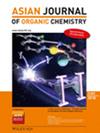Advancements in Polymeric Membranes: Fabrication Techniques and Innovative Solutions for Enhanced Performance in Reverse Osmosis
IF 2.8
4区 化学
Q1 CHEMISTRY, ORGANIC
引用次数: 0
Abstract
Reverse osmosis (RO) membrane processes are extensively used for water recovery, recycling, and production of high‐quality water for reuse, aiding industries in meeting regulatory standards and improving overall water efficiency. However, RO membranes encounter challenges such as chemical and biological fouling, which reduce performance, and damage from chemicals like active chlorine exposure, particularly to the polyamide layer. Thin film composite (TFC) membranes are designed for high water permeability, salt rejection, and resistance to temperature, pressure, and fouling. Sustainable developments show promising reductions in the environmental and economic costs of RO processes. Bio‐inspired membranes, such as those modeled after aquaporins, represent key advancements in selectivity and efficiency. This review highlights innovations in RO membranes, particularly polymeric materials, fabrication techniques, and strategies to address performance challenges, offering insights into the future of RO technology in meeting global water demands.
聚合物膜的进展:制造技术和提高反渗透性能的创新解决方案
反渗透(RO)膜工艺广泛用于水回收、循环利用和生产高质量的水以供再利用,帮助工业达到法规标准并提高整体用水效率。然而,反渗透膜面临着化学和生物污染等挑战,这些污染会降低性能,并且会受到活性氯等化学物质的损害,特别是对聚酰胺层的损害。薄膜复合材料(TFC)膜设计具有高透水性,抗盐性,耐温度,压力和污垢。可持续发展表明RO过程的环境和经济成本有望降低。生物激发膜,例如那些以水通道蛋白为模型的膜,代表了在选择性和效率方面的关键进步。这篇综述强调了反渗透膜的创新,特别是聚合物材料、制造技术和应对性能挑战的策略,为反渗透技术在满足全球水需求方面的未来提供了见解。
本文章由计算机程序翻译,如有差异,请以英文原文为准。
求助全文
约1分钟内获得全文
求助全文
来源期刊

Asian Journal of Organic Chemistry
CHEMISTRY, ORGANIC-
CiteScore
4.70
自引率
3.70%
发文量
372
期刊介绍:
Organic chemistry is the fundamental science that stands at the heart of chemistry, biology, and materials science. Research in these areas is vigorous and truly international, with three major regions making almost equal contributions: America, Europe and Asia. Asia now has its own top international organic chemistry journal—the Asian Journal of Organic Chemistry (AsianJOC)
The AsianJOC is designed to be a top-ranked international research journal and publishes primary research as well as critical secondary information from authors across the world. The journal covers organic chemistry in its entirety. Authors and readers come from academia, the chemical industry, and government laboratories.
 求助内容:
求助内容: 应助结果提醒方式:
应助结果提醒方式:


